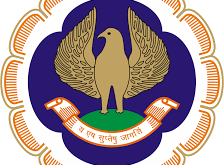Authored by Hemant Sikka, President of the Farm Equipment Sector, Mahindra and Mahindra Ltd. & Co-Chair of FICCI’s National Agriculture Committee
In India’s rural villages many women are often overlooked when it comes to securing a plausible a good respectable income from their family’s farmlands. This is in spite of being actively involved in farming. However, they are the unsung heroes of India’s agri economy, carrying a great part of that burden of their families’ farmlands, with their husbands moving to India’s big cities to improve their family’s economic situation.
India’s most important sector, agriculture has witnessed remarkable growth over the past decade, contributing around 20% to the country’s GDP. It provides employment to over 45% of the country’s workforce, with women making up nearly half of that workforce. Having said that nearly 80% of India’s employed women are engaged in agriculture. In addition to augmenting household incomes, these women are also tasked with fulfilling primary responsibilities, like managing their household chores.
Despite their pivotal role, gender stereotypes, social restrictions and traditional role expectations, hamper women’s access to knowledge and technology in farming, resulting in low productivity. According to the Periodic Labour Force Survey (PLFS) 2023-2024, the literacy rate of rural women of age 7 years and above is at 70.4% compared to rural men at 84.7% and urban women at 84.9%. According to the Agricultural Wages in India (AWI) report of May 2020, it is also alarming that in spite of increasing participation of women in farming, the wage gap between men and women is not on par. Regardless of these challenges, women farmers are a source of immense inspiration as they serve the nation with a spark in their spirit.
Given this, what actions can policymakers take to encourage women in farming, while establishing the country as the global hub for food? Especially in the context of the government support for agriculture as well as emerging agricultural technologies, what could the next set of reforms be, to take forward the already established momentum of feminisation of agriculture?
Evolving women self-help groups (SHGs), into Farmer Producer Organisations (FPOs)
‘Sabka Saath Sabka Vikas’ through women SHGs can attain various objectives, including empowering women by nurturing their knowledge and skills. SHGs can help strengthen their physical and emotional resilience, including that of their families, through education, nutrition and inculcating birth control measures.
The government’s ‘Sabka Saath’ initiative is laudable. According to data released in December 2023 by the Deendayal Antyodaya Yojana-National Rural Livelihoods Mission, India has 9 million SHGs, with almost 100 million women as its members. Transforming these women-led SHGs, into women-led FPOs (Farmers Producer Organisation), could go a long way in creating ‘lakhpati didis’. They can collectively guide participants on crop choice, access to microfinance and effective product marketing, gradually morphing into micro-enterprises producing packaged foods, for better earnings, while driving positive change in the lives of rural women.
Programmes providing access to critical farm equipment
A lot more women are interested in operating their equipment. Government initiatives like SMAM signify a step in the right direction. Under this central governments scheme, farmers are provided with the benefit of subsidies ranging from 50-80% for buying agricultural machinery, with priority given to women farmers.
With implementation in all states, it is important for the government to ensure greater access to affordable finance to acquire this farm equipment while establishing custom hiring centres to sample them. India also needs to look at farm mechanization beyond tractors, for affordable solutions catering to varied types of crops, across the lifecycle of the crop. Eg: Better penetration of Rice Transplanting technology can drastically reduce drudgery, over backbreaking manual transplanting, often seen in paddy states like Orissa, Telangana and Tamil Nadu.
Develop and drive solutions for women, by women
The Indian Council of Agricultural Research (ICAR) contributes to food security through its research. They provide the much-needed support to adopt technology on farms, drive rural innovation, improve farming practices, promote climate-resilient and sustainable farming, while also supporting agri-tech startups. ICAR’s network of 113 institutes and 74 agricultural universities across India, makes them one of the largest national agricultural systems globally.
However, more needs to be done to ensure that these centres work towards enrolling more women and fast-track the development of women-friendly farming solutions, with a tailored approach, to impart the required education and sensitivities related to women in farming. Integration of new-age technologies like AI, ML, IoT and app-based solutions too, can help mark a transformative shift for women in farming.
The private sector too can play a major role in delivering affordable and accessible farm solutions developed for women farmers. Innovations are needed among rural women, to feel inclusive, contributing further to agriculture and the Prime Minister’s vision of a ‘Viksit Bharat’.
In conclusion, India ought to focus on developing core competencies around gender issues in agriculture and more so rural India, with inclusion of the women perspective as an integrated component in policy and research. Progress and growth of women in farming must be closely linked to overall development goals of the country, besides enhancing India’s reputation, as it becomes the breadbasket of the world.
 Newspatrolling.com News cum Content Syndication Portal Online
Newspatrolling.com News cum Content Syndication Portal Online







